

The ideal model railway layout will look different to every hobbyist, and that ‘ideal’ is likely to be determined by your early experiences. When starting the hobby, many of us would have started out with a starter set. Traditionally, this comprises a locomotive, controller, track, and a couple of coaches or wagons. Whether we ultimately keep any of this differs from person to person, but the one thing it does do is inspire. That said, it can also be overwhelming. What do you buy next? Where do you go from here? Well, the first thing not to do is jump in and buy a new locomotive. Although this is very tempting, it’s best to do some detailed model railway planning before committing - but, by all means, buy your locomotive after that!
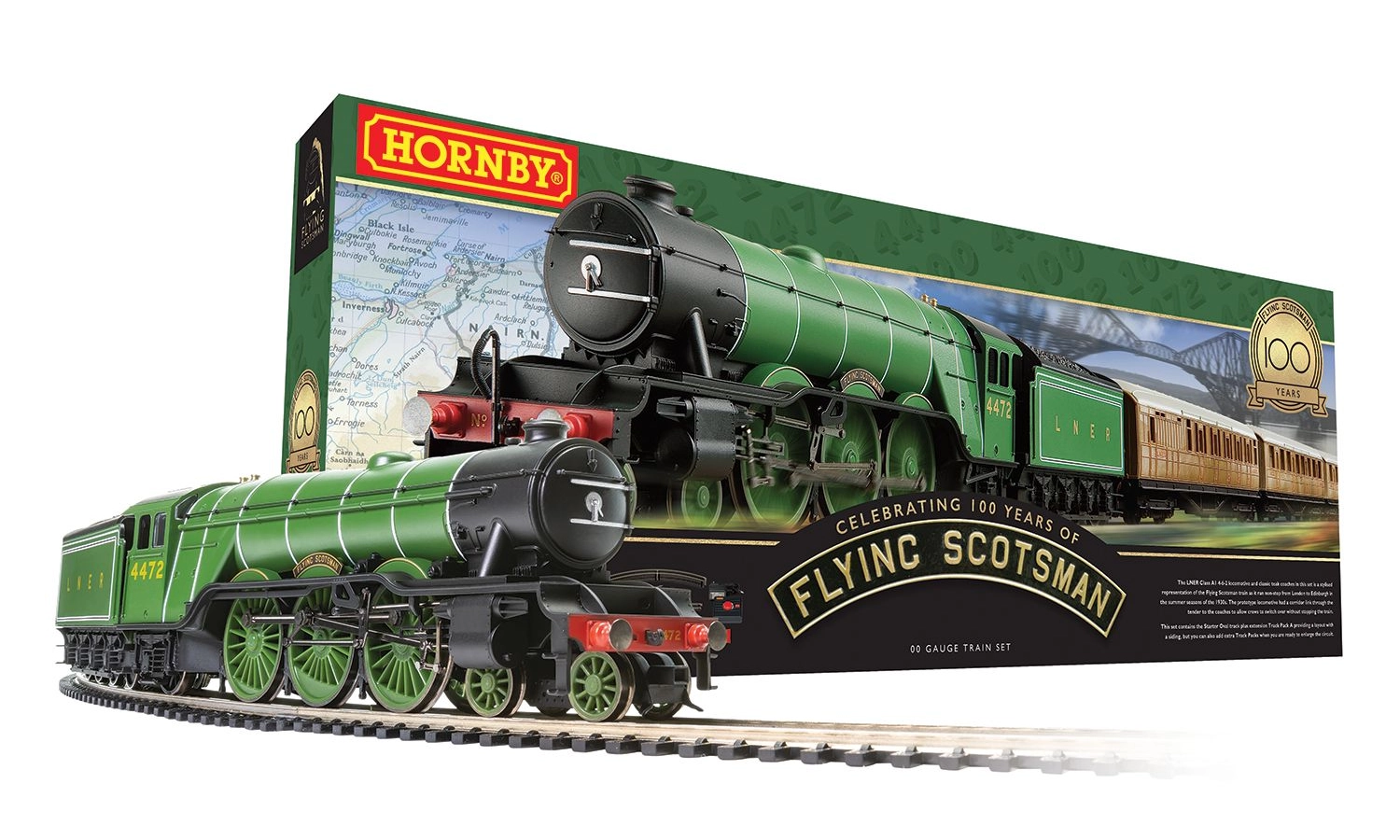
The contents of a standard Hornby Starter set usually contain a selection of track, rolling stock and controller. The Flying Scotsman Set is one of the more popular starting points.
So what are the first stages of model railway planning?
So, where do you start when it comes to model railway layout plans? The first thing to do is to decide what it is that you want to model. Will you take inspiration from the set you started with? Do you want to recreate an actual location? Or, do you just want to run what you want and throw out the rulebook? Whichever way, the choice is yours.
Bear in mind that if you want to recreate a specific location with your layout, you’ll need to do some research, as some locations pivot around a specific element; whether that’s a curved platform, a certain signal box, or a particular track arrangement. You want to make sure you have the space available to do what you want to do.

This is a photo of Ferrocarril San Maria Gandia, a HO/Hoe Scale Spanish layout. The theme dictated a simpler track plan that focuses more on the scenery around it.
If, like the example above, you started your model railway layout with a Flying Scotsman train set, you could move this to create a variety of options. You could keep going with the track mat provided, and build up using the extension packs or you could use the track and go off in another direction - for example, a model of an Eastern Mainline station through which the Flying Scotsman would have run.
Another option is that as the Flying Scotsman is a preserved locomotive, you could model a preserved line. This would lend itself perfectly to an accurate model, with the option of running what you want. Every railway has special running days, so if you want to run the Flying Scotsman with BR Blue diesel locomotives on your layout, then go for it!
Of course, the scale of your model railway design does come into the decision here too. You may find that a smaller scale allows you to fit more in a smaller space, but can be fiddlier. A larger scale lends itself to the possibility of a lot more detail, but naturally will require more room, so take care to consider which scale would be right for you.
The location of where the layout will be built, operated and stored within the space available can determine its size too. A coffee table layout is just that; a small model railway layout in or on a coffee table. This certainly constrains the working area, but doesn't take up a lot of space.
Although lofts can be the promised land of locations, in reality, without a lot of work and potential cost, this isn’t ideal for a first model, especially if a loft conversion is needed. Take it slow, and start off small - you can always expand a layout later.
Starting with a small model railway layout gives you the chance to progress quicker and see results sooner, and actually enjoy the process rather than having to spend hours ballasting miles of track before you notice any real change. After all, a hobby is meant to be something that’s fun and to be enjoyed!
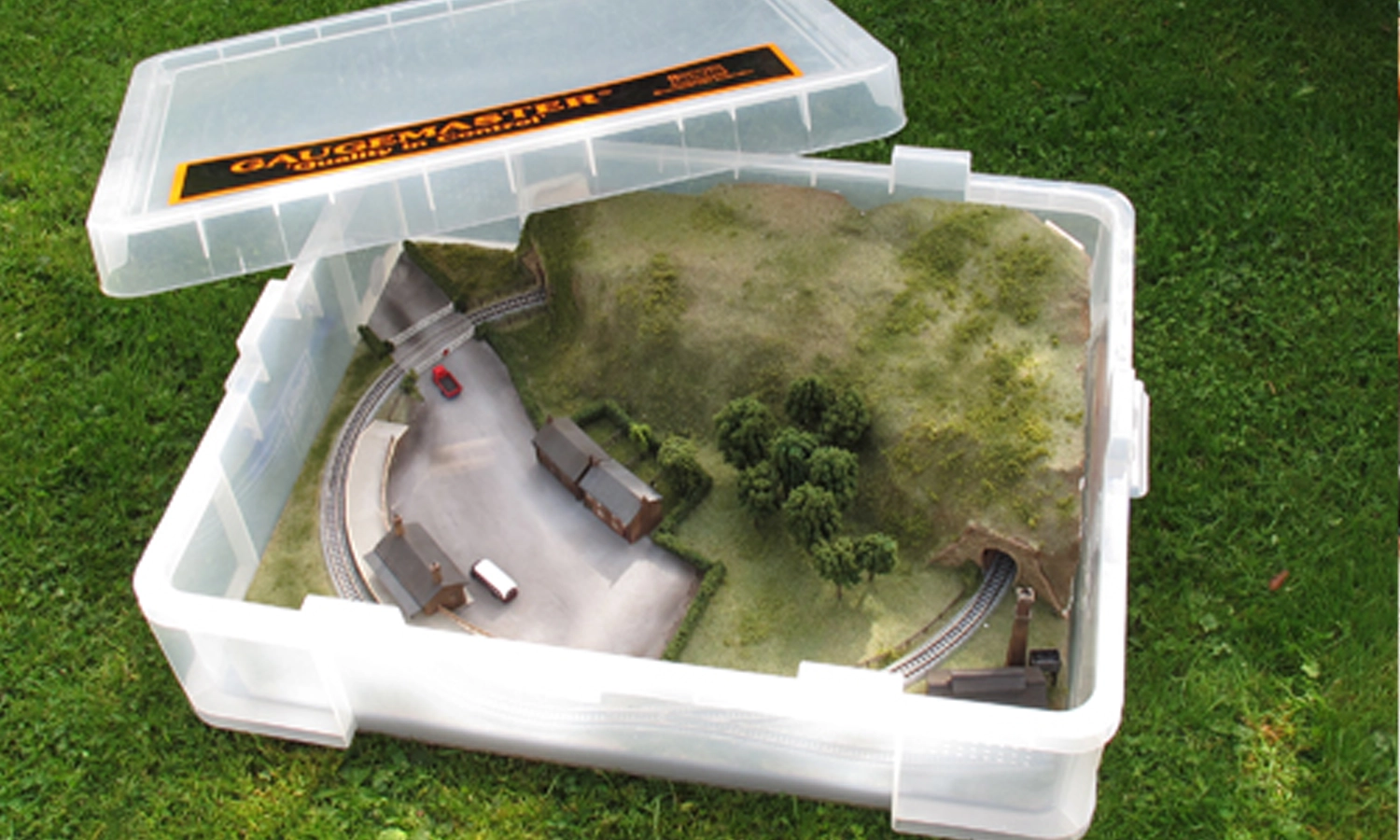
Here we see Phil Parker's Layout that was built in a weekend. This creative layout shows how a small project like this can give almost instant results and that feeling of accomplishment.
Once you’ve decided what you’re modelling and where it’s going to go - taking care not to invoke the wrath of any of the domestic authorities of course - it's time to start planning. Some people prefer to start with a sketch, while some prefer to jump right into track planning software. Either way is fine, and both have their advantages.
Setting your model railway layout plans in a software package can be more accurate and give you a sense of the space, whereas the tried-and-tested pencil and paper brings with it the organic flow of thought and consciousness right onto the page in front of you.
Think about what you want from the layout here too. Do you want an end-to-end layout to run the trains up and down, a circular layout you can just leave running and watch the trains go by, or a mixture of both?
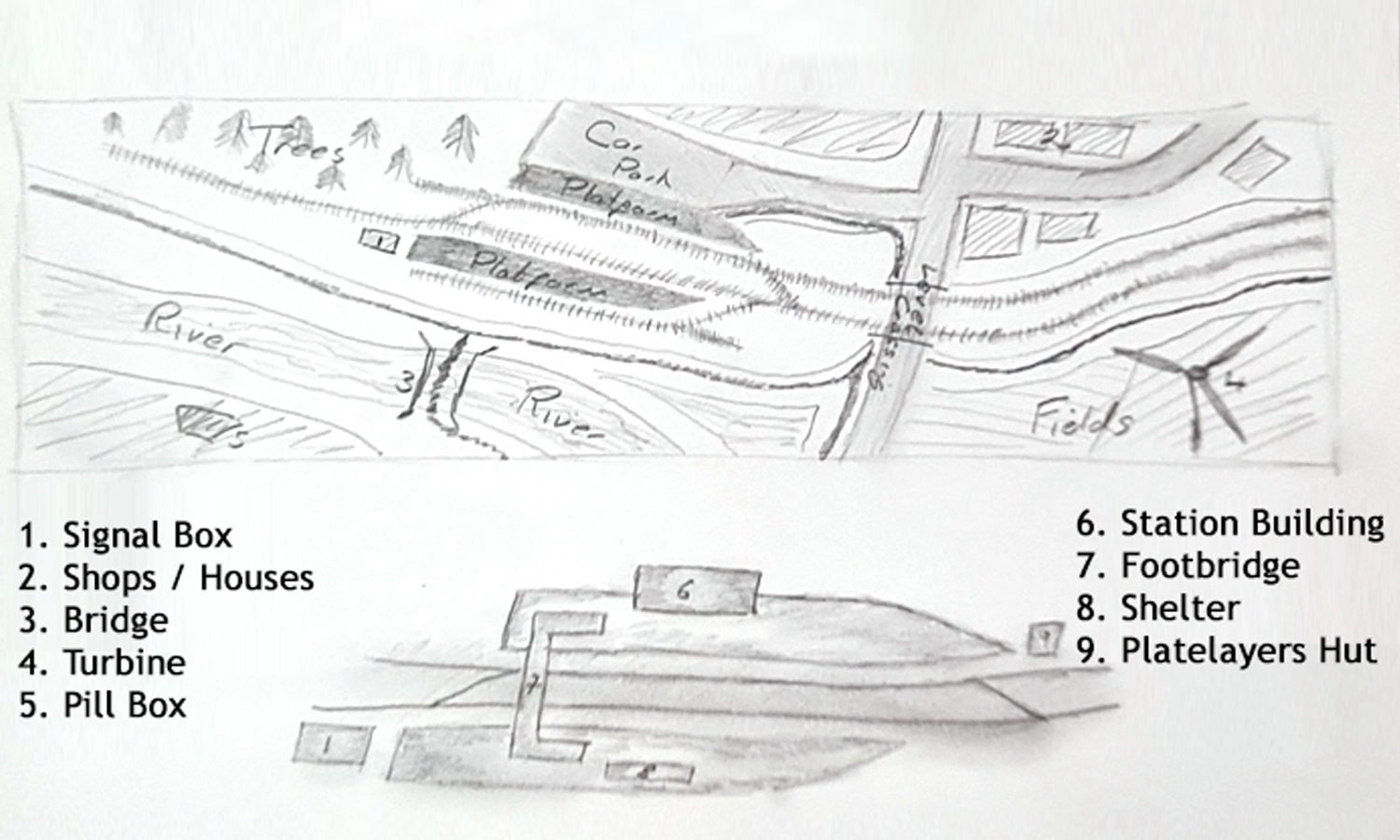
The next stage is to plan the model railway layout. Many people find a sketch is the best way to start. This is the plan of a layout called Leadworth.
The next stage is to plan the model railway layout. Many people find a sketch is the best way to start. This is the plan of a layout called Leadworth.
Our model railway layout series will heavily feature the development of Leadworth. A small end-to-end layout lat was designed to be a stand-alone layout that could be added to and grown over time. This station would form the end of a preserved line.
For Leadworth, the idea was sketched out, and then the track plan was realised in a program called Anyrail. Although we do not have any connection to the company, many of the Gaugemaster team use this software and find it a useful tool in planning. Of course, there are others out there, and each one offers the user a different experience, so it’s about finding the one that works well for you.
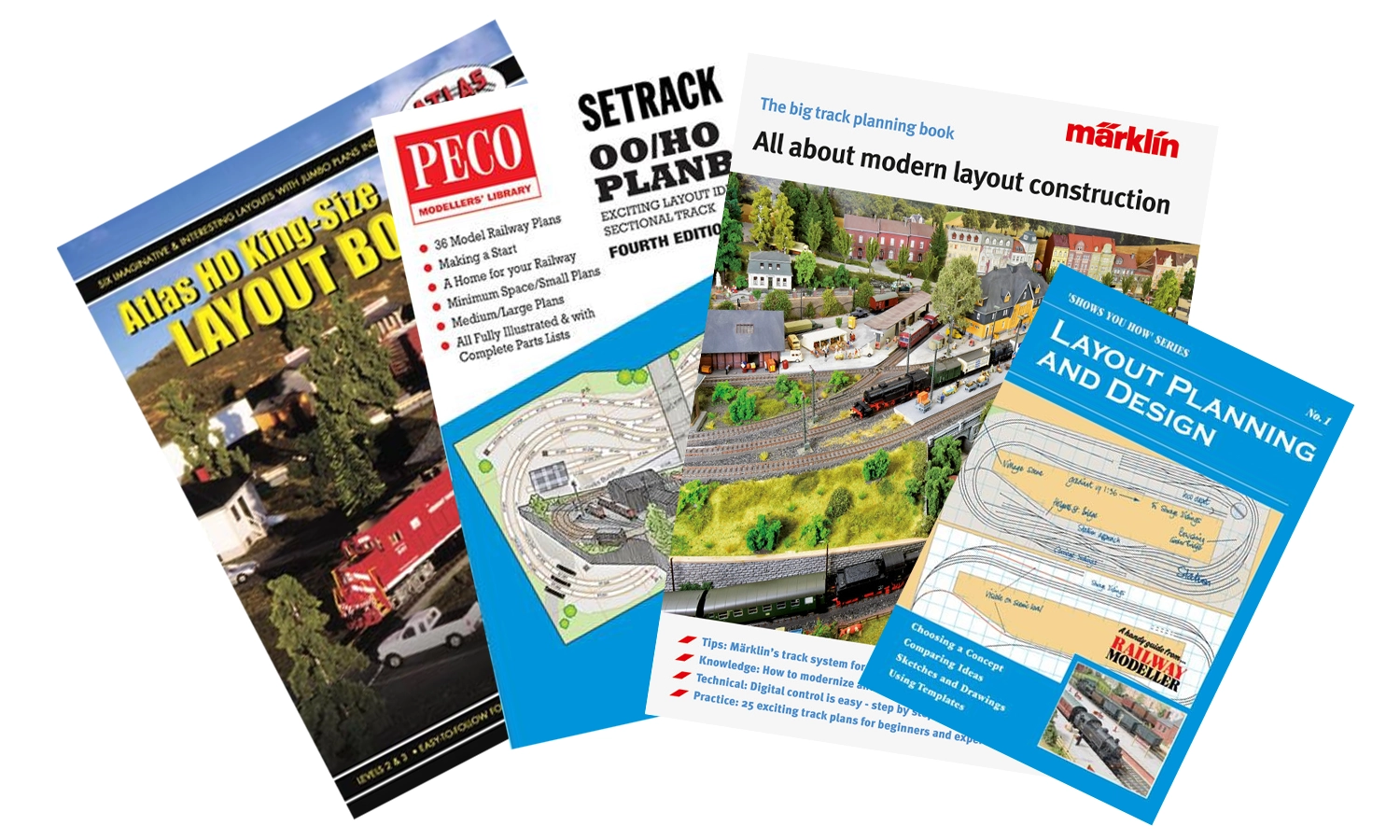
There are a variety of plan books on the market containing a plethora of planning ideas.
Of course, if you need some help or ideas for the track plan, there are many books on track plans for model railways out there. Some use specific pieces called set-track and others use flexible track. Some use both, whereas others use simple line drawings, giving a sense of the layout, but allowing the modeller to adapt the plan to their own.
When planning, another key point is to make sure you jot down a list of everything you want to include and work these into the final design. If you have a favourite model of a signal box you wish to show off, don't design the layout where it would have to hide away - make it centre stage!
Once the sketch is complete, and you’re happy it contains everything you want it to, you can move your model railway design onto the track planning software. Once designed, many of them will also give you a list of required sections. This is very handy, as many model shops would be more than happy if you took the list in and asked for exactly the sections you are after, and you won’t end up purchasing sections of track you would never need. One helpful thing here is that these plans can be printed at a 1:1 scale so can even give you a full sense of the finished size.
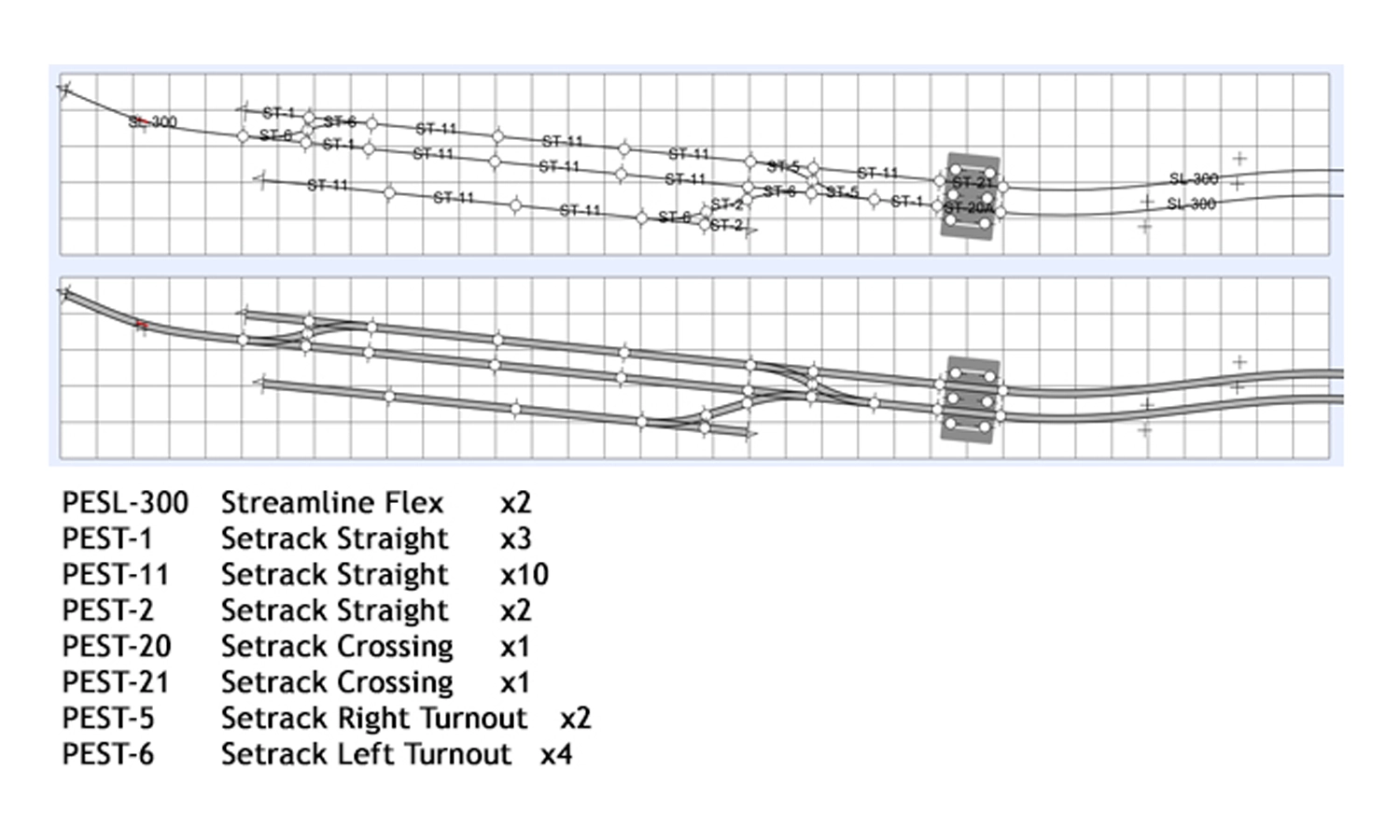
Here is the digital track plan for the layout. The program used also gives a list of sections required and allows you to use different manufacturers' track ranges.
Here is the digital track plan for the layout. The program used also gives a list of sections required and allows you to use different manufacturers' track ranges.
When designing this layout, one of the ‘must-have’ features was a bay platform (similar to the one that was once found at Ford next to Gaugemaster HQ). This was the first thing to be designed, and the other components fitted around it. Also to be included were a river, some form of industry, and roadway infrastructure.
This particular model railway layout was actually based on a memory the designer had, as they remembered visiting a preserved railway in a similar location. One feature of this real-life terminus was that the locomotive, after uncoupling from the rake of coaches, trundled up the line further and disappeared behind the tree line, before returning on the adjacent line to run round the train. To recreate this, an extra-long run-around was also incorporated into the design, and the theme of a preserved line was confirmed.
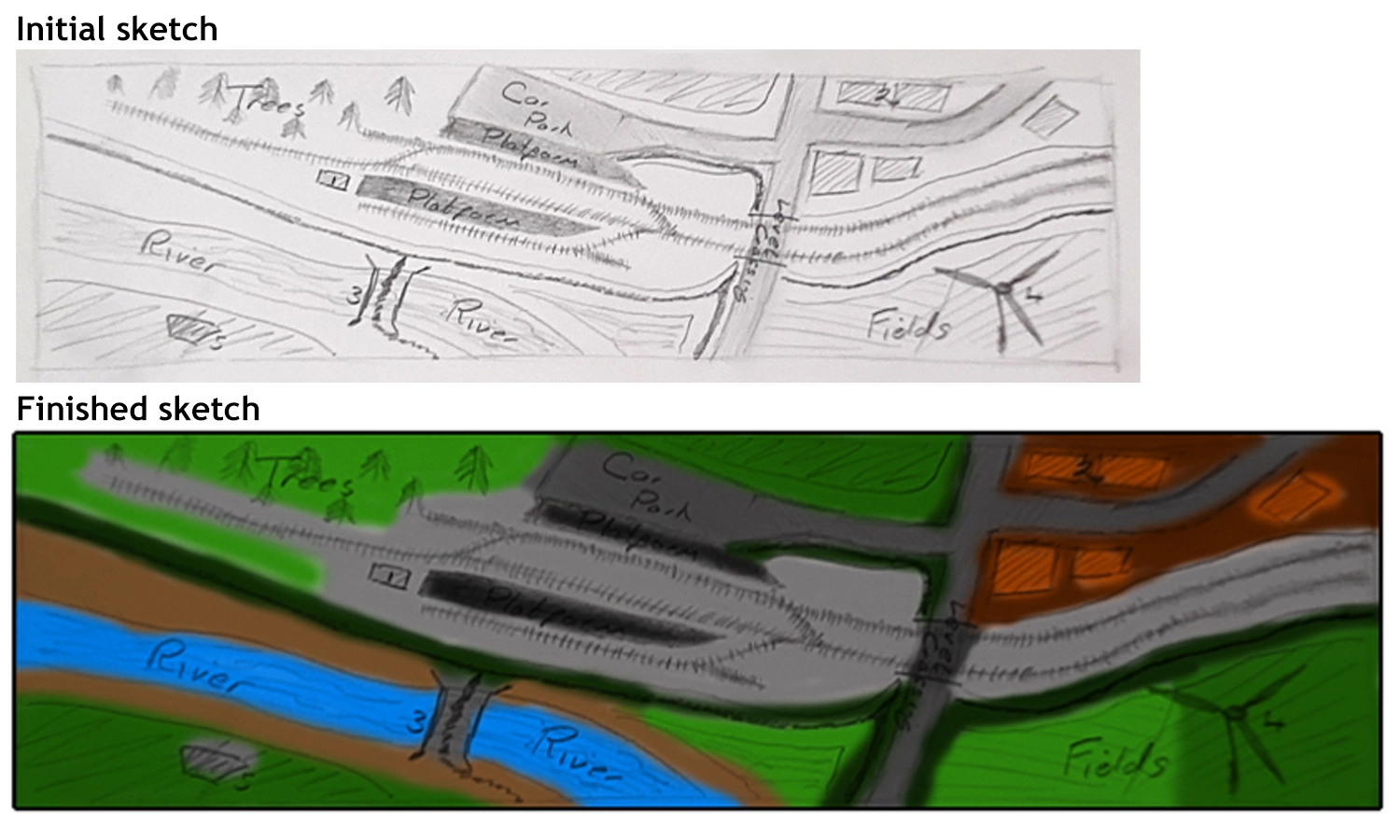
The finished sketch gives us an idea of how the model railway will look and feel.
The finished design was coloured to give a sense of the space and how much of the layout is devoted to railway infrastructure and how much is devoted to the surroundings. The most realistic layouts always consider both, and ultimately you start to realise that the buildings around a station do tend to take up more space than the railway infrastructure. The other thing you will notice is that the track does not run parallel to the board's edge.
When you look at a lot of layouts, you’ll see that the shape of the layout is derived from the shape of the track. This one was intended to offer a slightly different view so it was designed in a way that the viewer could look into the platform, as well as along it.
A final note; for this project, inclines were avoided. Although useful in a lot of situations, they can be harder to construct and design effectively on a first model railway layout. There are other ways that we can bring highs and lows into our layout without using inclines, especially when it comes to baseboard design. This is covered a bit more in other articles within the Knowledge Base, so don't forget to check them out.
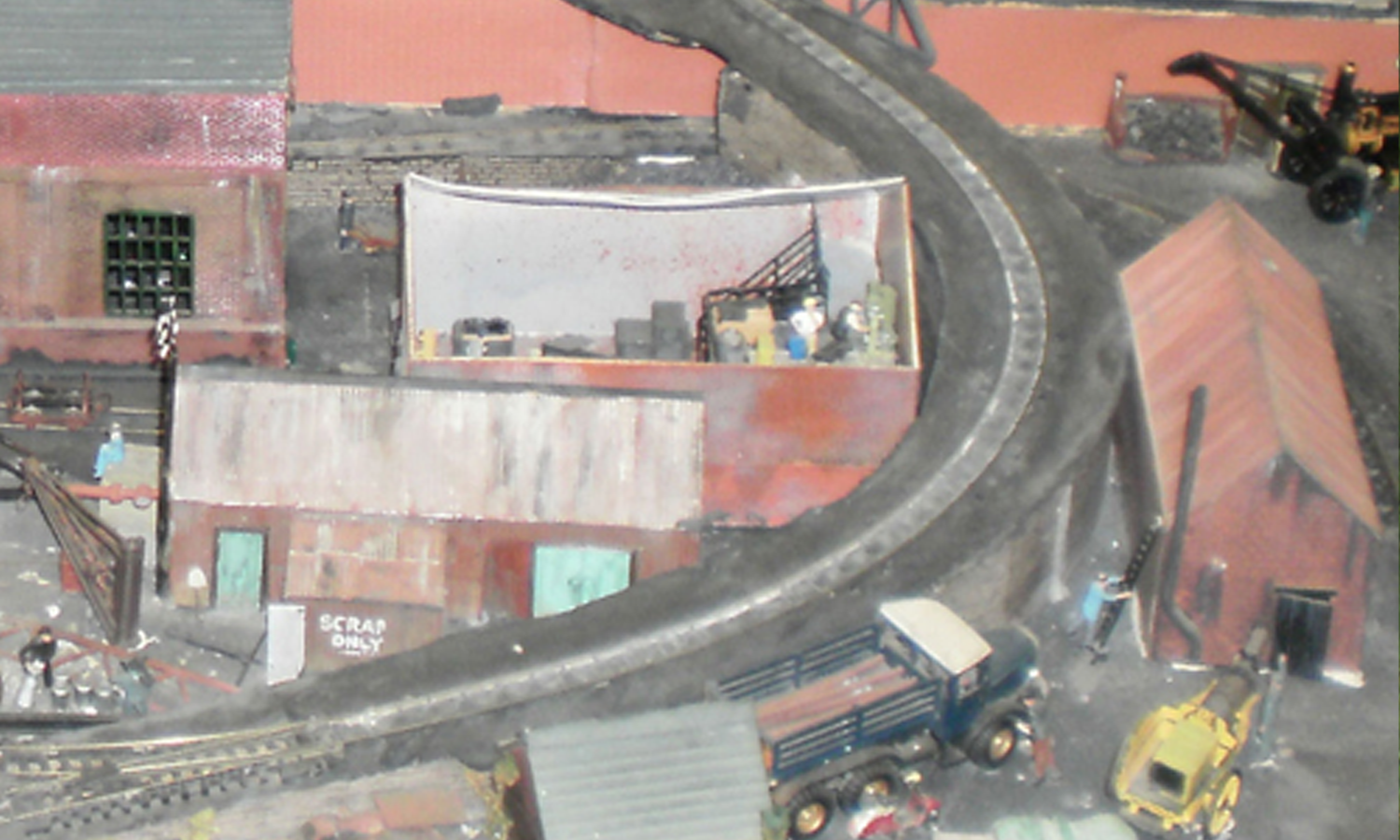
An incline as seen on Matt Lovell's layout Weltitt & Hope. These are best avoided on your first layout.
Whichever way you’re designing your layout, it is always best to think about the end product first. What is it you really want to achieve? If you work back from there, the design work comes easily, and you will find that the layout of your dreams is only a few steps away.
This article is part of a series of articles about building a model railway layout, focusing on the journey of the layout Leadworth from conception to reality. If you’re interested in reading through the journey, then make sure you keep an eye on the Knowledge Base, or click the link below to search for all the articles in the series.
Explore our full collection of model railway supplies to bring your ideal layout to life.
This article has been written by our staff here at Gaugemaster, drawing on thousands of hours of modelling experience. Each article has been written to make it easy for everyone from beginner to expert to learn and expand their own knowledge base. If there is something you would like to see covered, feel free to contact us to suggest a topic - we’d love to hear from you.
For more articles like this, and many others; don't forget to check out the Gaugemaster Knowledge Base.